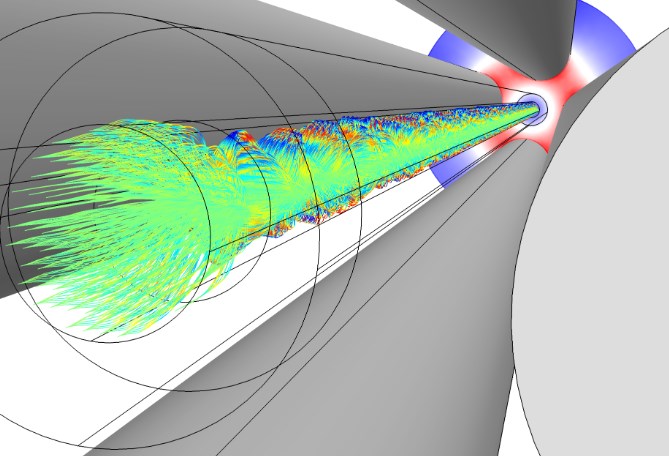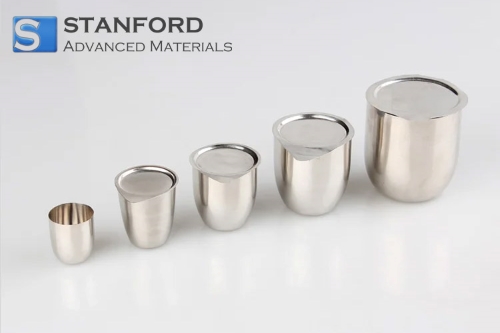Survey of High Field Superconducting Materials for Accelerator Magnets
Introduction
High-energy particle accelerators are at the forefront of modern scientific research, enabling breakthroughs in particle physics, materials science, and medical diagnostics. Central to the performance of these accelerators are superconducting magnets, which generate the intense magnetic fields required to steer and focus charged particles. This article presents a comprehensive survey of high-field superconducting materials used in accelerator magnets, highlighting their critical role in advancing scientific discovery.

The Need for High-Field Superconductors
Accelerators, such as synchrotrons, cyclotrons, and linear accelerators, are essential tools for fundamental research in particle physics, materials science, and medical applications. These machines require powerful magnetic fields to steer and focus charged particles effectively. Superconducting materials, which exhibit zero electrical resistance and can carry high current densities without energy loss, are indispensable for achieving the necessary magnetic fields.
Historical Perspective
The history of high-field superconducting materials for accelerator magnets can be traced back to the discovery of superconductivity itself in 1911. Initially, low-temperature superconductors like niobium-titanium (NbTi) and niobium-tin (Nb3Sn) dominated the field. While they revolutionized accelerator technology, these materials have inherent limitations in terms of magnetic field strength and cooling requirements.
Advanced High-Field Superconductors
In recent decades, researchers have explored high-temperature superconductors (HTS) as promising alternatives. Yttrium barium copper oxide (YBCO) and bismuth strontium calcium copper oxide (BSCCO) are notable HTS materials that can operate at relatively higher temperatures, making them more practical for certain applications.
Key Properties and Advantages
High Critical Magnetic Field (Hc): High-field superconductors can withstand stronger magnetic fields, enabling the development of more compact and powerful accelerator magnets.
High Critical Current Density (Jc): These materials can carry substantial current densities, resulting in efficient magnet designs.
Operational Efficiency: Reduced energy consumption due to zero electrical resistance and minimal cooling requirements.
Compact Design: High-field superconducting magnets can be more compact than their conventional counterparts, saving space and reducing costs.
Applications in Particle Physics
High-field superconducting materials have found applications in various particle physics experiments and facilities, such as the Large Hadron Collider (LHC) at CERN and next-generation projects like the Future Circular Collider (FCC). They enable the creation of stronger magnetic fields, allowing for higher collision energies and more precise particle manipulation.
The Quest for Higher Energies
Particle accelerators, like the Large Hadron Collider (LHC) at CERN, demand increasingly higher magnetic fields to propel particles to greater energies. Superconductors are materials that exhibit zero electrical resistance when cooled to extremely low temperatures, making them ideal for generating intense magnetic fields. To meet the demands of next-generation accelerators, researchers have embarked on a quest to discover and optimize high-field superconducting materials.
Niobium-Titanium (NbTi): The Pioneer
Niobium-titanium (NbTi) superconductors were among the first materials successfully employed in accelerator magnets. They are renowned for their high critical magnetic field and widespread use in existing accelerator facilities. However, their performance plateaus at around 9 Tesla, limiting their suitability for cutting-edge applications.
Niobium-Tin (Nb3Sn): Pushing the Boundaries
In pursuit of higher magnetic fields, researchers turned to niobium-tin (Nb3Sn) superconductors. With a critical magnetic field surpassing 15 Tesla, Nb3Sn offered a significant boost in performance. Despite the complex fabrication process, accelerator projects such as the High-Luminosity LHC have adopted Nb3Sn magnets due to their remarkable field strength.
High-Temperature Superconductors (HTS): A Game Changer
The emergence of high-temperature superconductors (HTS) has revolutionized accelerator magnet technology. These materials, often based on yttrium barium copper oxide (YBCO) or bismuth strontium calcium copper oxide (BSCCO), can operate at temperatures significantly higher than traditional superconductors. HTS materials have demonstrated critical magnetic fields exceeding 30 Tesla, offering unparalleled performance for future accelerators.
Challenges and Future Prospects
While HTS materials hold immense promise, they present challenges related to fabrication and cooling systems. Researchers are actively addressing these issues to harness the full potential of HTS for accelerator magnets. Additionally, exploring novel superconducting materials, such as magnesium diboride (MgB2) and iron-based superconductors, could yield further breakthroughs in high-field applications.
Conclusion
The survey of high-field superconducting materials for accelerator magnets reflects the dynamic nature of accelerator technology. From the pioneering days of NbTi to the transformative impact of HTS materials, the quest for higher energies and stronger magnetic fields continues to drive innovation in the field of particle physics. As researchers and engineers push the boundaries of superconductivity, the future of accelerator magnets promises to unlock new frontiers in scientific exploration.



